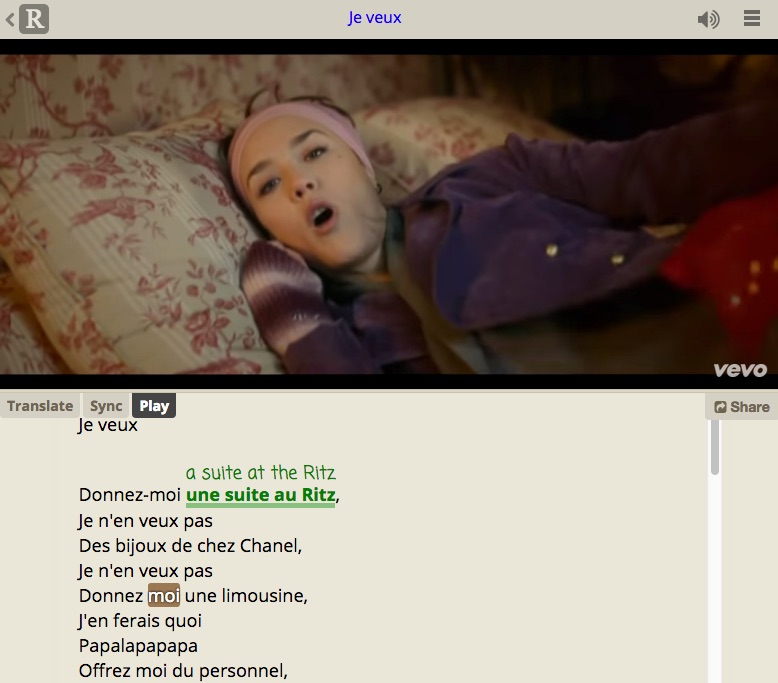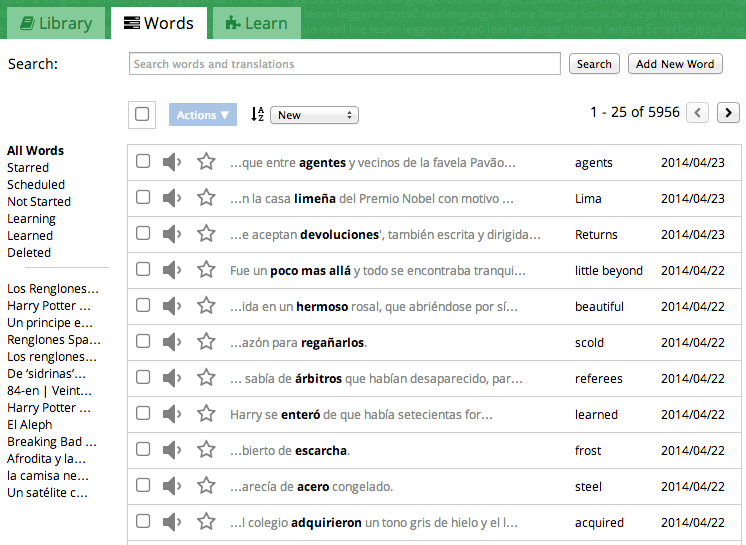The best way to read in the language you're learning
Speaking mode
Speaking and listening skills are an extremely important for learning a language. Readlang already has plenty of YouTube videos for you to practice listening. Songs have proved to be a favorite:
To complement this, you can now enable Speaking Mode. This provides automatic text-to-speech when you click a word or phrase in any text, and when reviewing your flashcards, Readlang will pronounce the word or phrase as it is revealed.
To translate or not? Monolingual mode arrives
There are few topics more divisive among language learners than the question of translation. Is translating a bad habit? Should learners stop as soon as possible? Whatever your opinion, Readlang can now help.
From today, you can disable translations and access monolingual definitions.
New Activity Monitor to encourage a daily language learning habit
The main reason people fail at learning a language is not showing up to practice every day. Effective language learners manage to incorporate the language into their lives on a regular basis, they form daily habits. Having a job where you must speak the language is ideal, but most of us need to find other ways to squeeze practice into our busy lives.
Turn your favorite novel into a motivating and effective language learning tool

If you enjoy reading novels, and wish to learn a second language, then you’re in luck, since reading can form a highly motivating and effective way for you to absorb the grammar, vocabulary and culture of a language.
Learn a language while you surf - training wheels for browsing the web in French, Spanish, German + 50 other languages

The best way to learn a language is to form productive habits, and what easier habit to form than browsing the web? Turn your addiction into a powerfull learning tool with the redesigned Web Reader.

- Install it as a Chrome extension (recommended)
- Install it as a browser bookmarklet (for Firefox, Safari, Internet Explorer, and mobile browsers)
Chapters and Rich Formatting
Based on your feedback, Readlang has become a fully fledged eReader with the addition of chapter navigation, as well as bold and italics:
Auto Highlight Words As You Read
Context is key when learning language. Wouldn’t it be nice to access previous contexts you’ve seen a word in every time you encounter it in a new text?
Based on popular demand, I’ve added the ability to auto-highlight words you’ve previously translated as they appear in new texts. Clicking on any of these underlined words will trigger a pop up showing the translation along with previous contexts.
New Translation Glossing Mode
Readlang’s main feature is inline word and phrase translation, as seen here in the Web Reader:
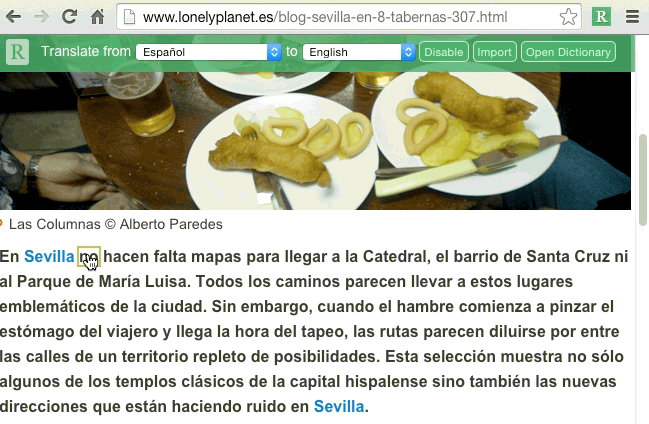
My Favorite Tools For Learning Spanish
The best way to learn to speak Spanish is to just speak Spanish. Ideally with native Spanish speakers. But there’s also a lot you can do completely independently, and these are some of my favourite methods of self-study.
By the way, although I’ve focussed on Spanish, these methods are applicable for many languages.
1. Michel Thomas
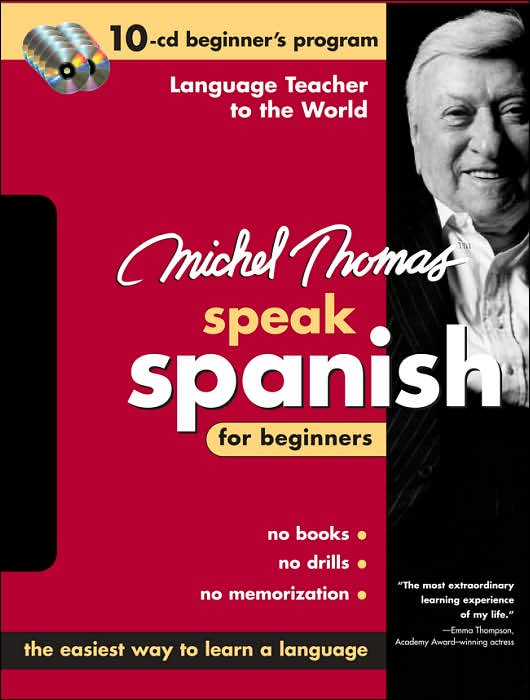
This is a great place to start. It gives you a really good feel for the grammar, getting you to construct quite complex sentences from the very start, which really gets you motivated with the feeling of rapid progress. The format is unusual in that there are two other students on the CD who are learning alongside you and who will often fumble through an answer to be corrected firmly by Michel. It sounds strange but it really works. As with most language learning CDs, it’s best to actively participate, pausing after each question and speaking the answer aloud, or in your head, before listening to the student’s and Michel’s responses.
After finishing this course you should have developed a really good intuitive feel for the structure of the language, but will still have a very limited vocabulary.
8 Reasons You Should Read More (includes waffles)
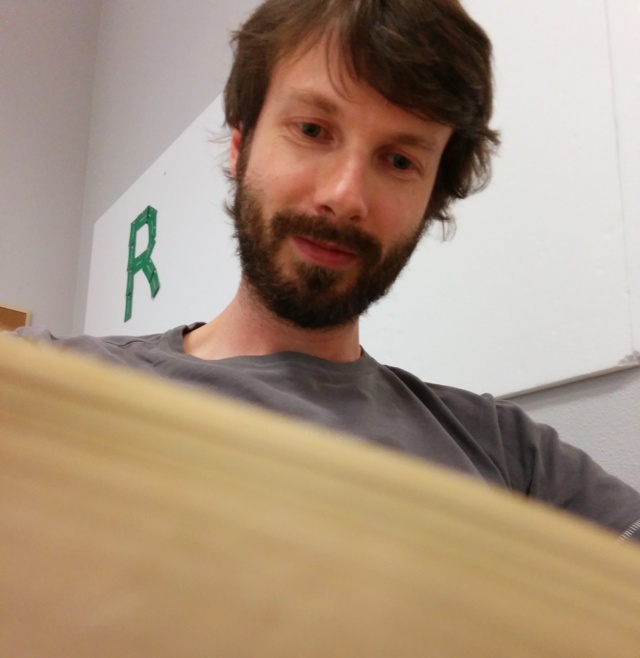 Selfie of myself reading at the lab. Note the professional Readlang logo in the background ;-)
Selfie of myself reading at the lab. Note the professional Readlang logo in the background ;-)
I’m already addicted to reading in my native language of English. As a child I would read computer magazines cover to cover, as a teenager I started reading novels like The Andromeda Strain, and now as a guy who works at a computer all day long, even when working I’m habitually reading blogs, forums, wikipedia articles, news sites, you name it! So when I decided to learn Spanish, it was only natural to make reading the foundation, and reading in Spanish is now my core daily language learning habit. Here are 8 benefits:
Tips to take charge of your vocabulary learning
Readlang now has a powerful new Words page:
This is a flexible tool to manage your vocabulary, whether you’re a hardcore language geek or simply looking for new ways to speed up your learning. Bear in mind that none of this is necessary to use Readlang, which you can very happily do using only the Library and Learn pages. The Words page is a great addition for those who want to take a more hands-on approach to their vocabulary learning.
Here are some useful tips for making the most of the Words page:
Are some people naturally better at learning languages?
I just read a fascinating article about the development of Hi-LAB, the “High Level Language Aptitude Battery” test designed to help the US military identify individuals with high language learning potential. It was borne out of a frustration with seeing so many language professionals getting ‘stuck’ at basic proficiency and not progressing to become fluent. After some research, CASL (Center for the Advanced Study of Language at the University of Maryland) concluded that the following three traits were linked to language learning success:
Practice Words From Specific Books
By default, Readlang will select flashcards for you to practice which are useful, high frequency words, and are scheduled for review according to Readlang’s spaced repetition algorithm.
But what if you are focussed on a more specific goal? Perhaps your job or studies require you to learn technical terms, or perhaps like me you’re working your way through Harry Potter and would like to restrict your study to those books. I’ve recently added a new feature for Readlang Supporters that allows you to choose to study words from any text from which you’ve translated 10 or more words or phrases, for example:
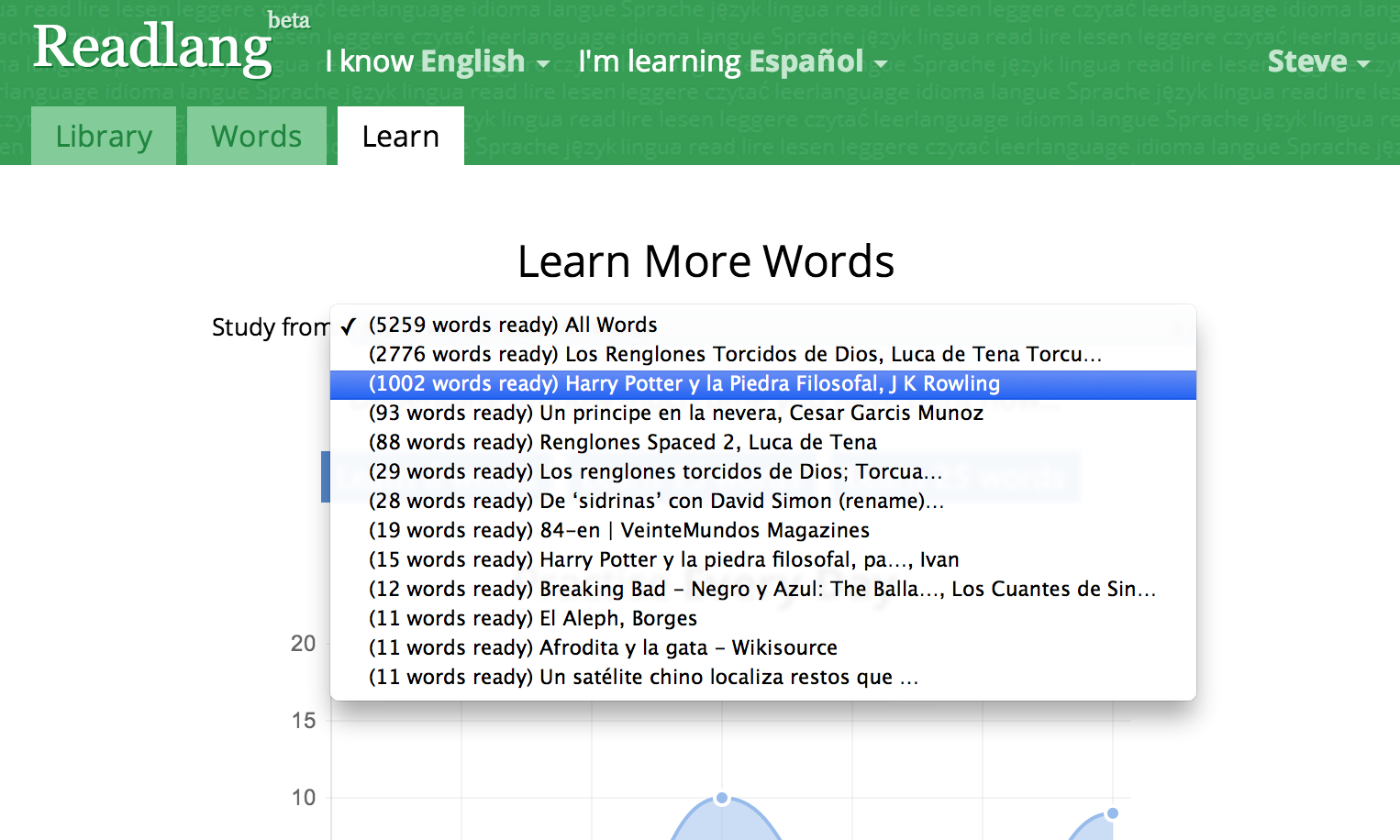
The Making of Readlang - The First 16 Months
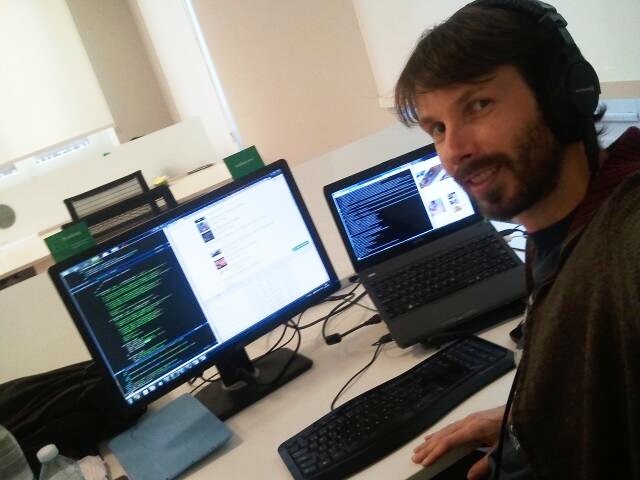
It’s been 16 months already. In that time the site has grown from nothing to almost 5000 users, and continues to receive awesome feedback and grow ever more quickly. But it’s not all roses. There’s a long way go to make this sustainable, and I’m very motivated to keep battling on and making it happen!
Learn Languages with Harry Potter
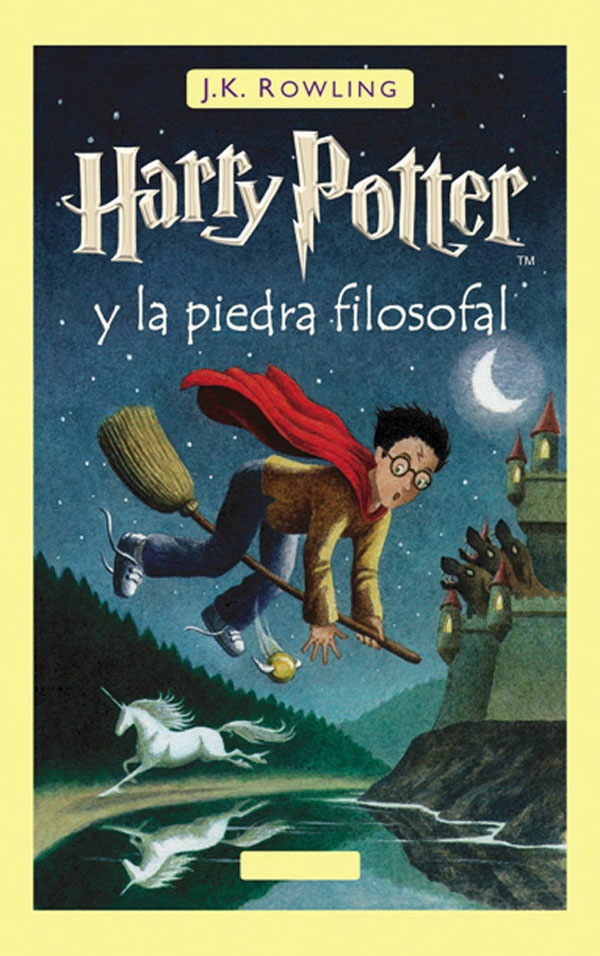
A failing of most language courses is that their content is so boring. It’s hard to stay motivated reading stories like “John goes to the supermarket”, I want to read about epic adventures, with drama, mystery, and wizards!
That’s why I’m so excited that the Harry Potter e-books are available to buy DRM free, ready to import into Readlang and help learn languages!
